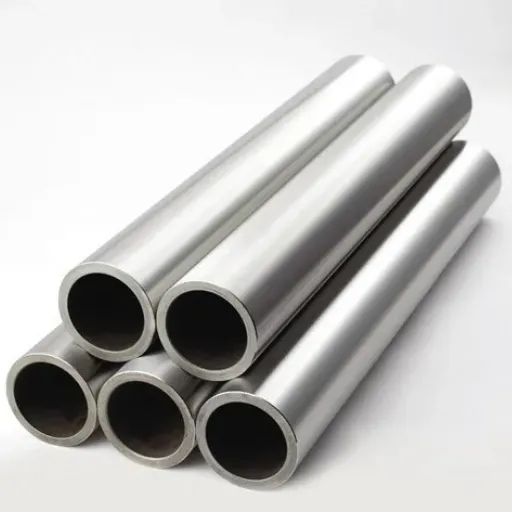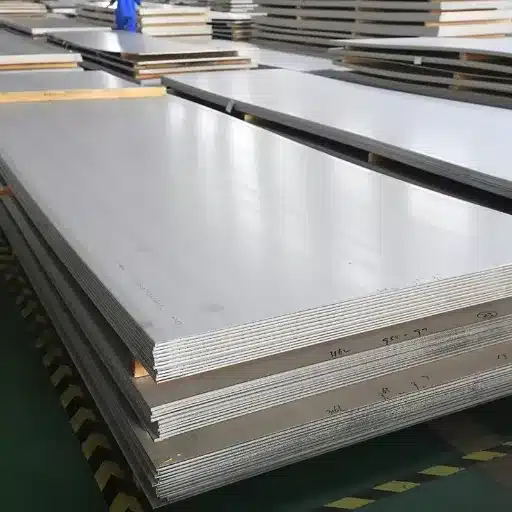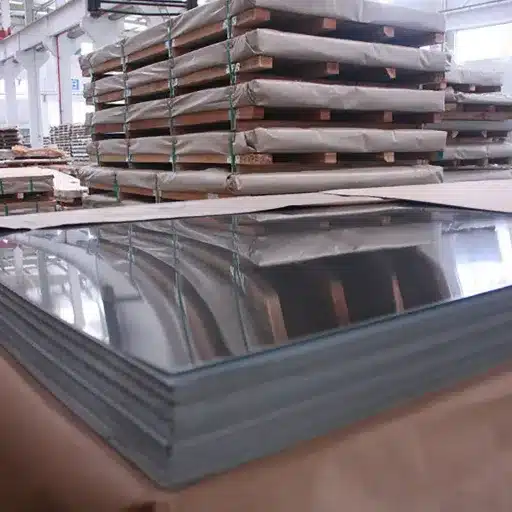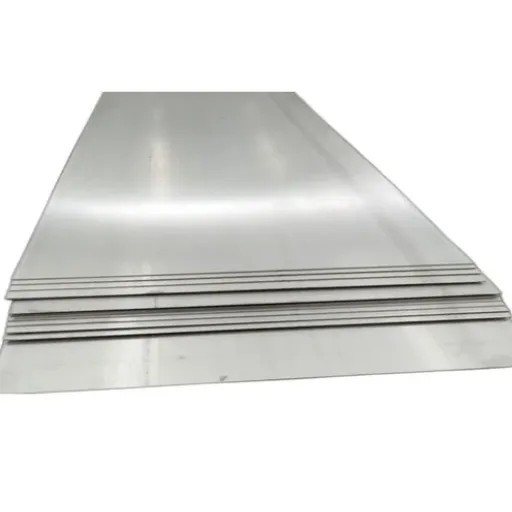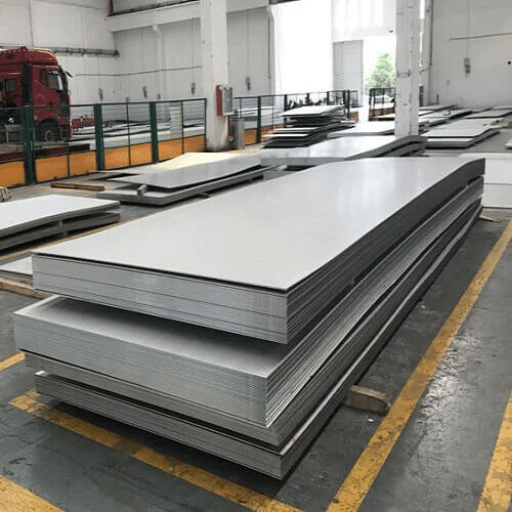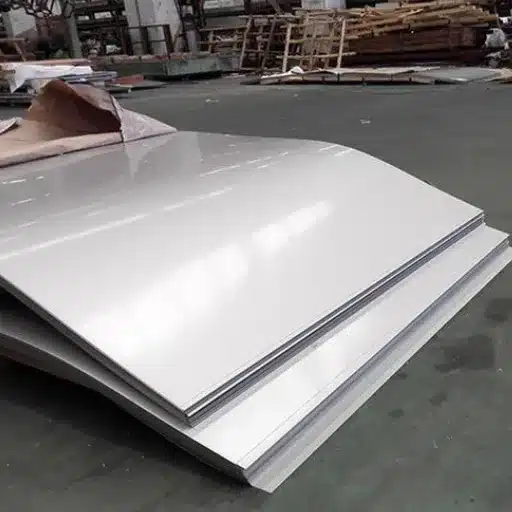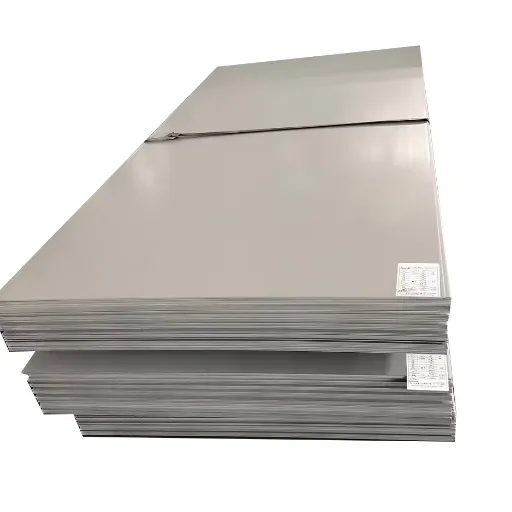Nickel alloy pipes, when it comes to materials prepared for extreme environments with great strength and durability, top the choice list. With properties that offer incredible corrosion resistance, such types of pipes are used in a plethora of industries, ranging from chemical processing to aerospace. But what really makes nickel alloy pipes so dependable when it comes to critical applications? This article delves into the unique properties of nickel alloy pipes, alongside some of their key benefits and the various applications that rely on them. If you are a professional in the field or a curious soul interested in advanced materials, this is your guide to understanding why modern engineering and manufacturing cannot do without nickel alloy pipes.
Applications of Nickel Alloy Pipes
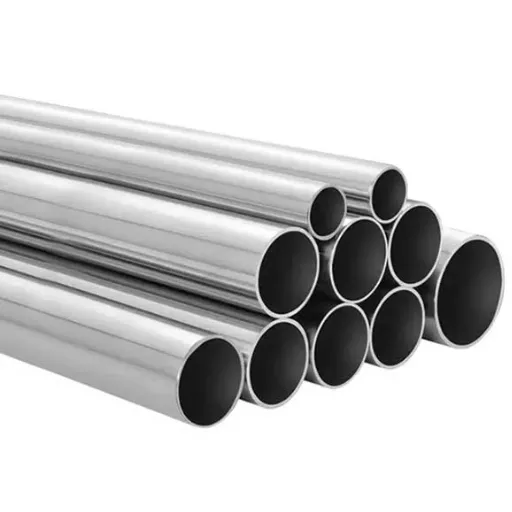
Industry Applications
Incredible strength, corrosion resistance, and extraordinary ability to resist any extreme conditions—the properties of these pipes make their applications innumerable. There are five big industries in which these pipes are most indispensable:
1. Aerospace
Nickel alloy pipes find use in the aerospace industry owing to the ability to withstand high temperatures and harsh environments inside jet engines, exhaust systems, and some structural components, where reliability and performance are a long-term requirement.
2. Oil and Gas
Nickel alloy pipes are widely used in the oil and gas industry, for upstream, midstream, and downstream operations. These pipes are required to transport corrosive substances at very high temperatures such as are found in subsea pipelines, drilling equipment, and refineries.
3. Power Generation
Steam and gas turbines, heat exchangers, excepting bronze, are nickel alloys in power plants to resist oxidative action at high temperature and varying stresses. Using these alloys increases efficiencies and decreases as well as maintenance.
4. Chemical Processing
In chemical processing plants, pipes for nickel alloys carry substances of highly corrosive nature such as acids and alkalis. Their chemical resistance and strength provide for safe and efficient operations.
5. Marine Engineering
Marine applications such as shipbuilding and offshore platforms are heavily dependent upon nickel alloy pipes. Such pipes find their use in seawater handling systems and ballast pipes that must resist seawater corrosion.
Key Insight: Each of these industries relies on the properties of nickel alloy pipes in challenging working conditions to maximize performance, safety, and longevity.
Use in Corrosive Environments
Specially made for hostile corrosive environments, nickel alloy pipes enjoy a high status in terms of advancement. Their chemical nature endows them with the highest possible resistance to various corrosion forms, especially where the circumstances are harsh; the industries can operate only if they take that resistance into account, for example, exposure to harsh chemicals, high temperature, particle erosion, and corrosive environment. The following are five major instances where nickel alloy pipes are taken to their corrosive conditions:
| Application Area | Corrosive Challenges | Recommended Alloy |
|---|---|---|
| Chemical Processing Plants | Strong acids, alkalis, and oxidizing agents | Hastelloy C-276 |
| Oil and Gas Industries | Hydrogen sulfide (H₂S) and carbon dioxide (CO₂) | Incoloy 825 |
| Power Generation | High-temperature steam and corrosive gases | Nickel-based alloys |
| Seawater Desalination | Chloride stress corrosion cracking | Monel 400 |
| Pharmaceutical Manufacturing | High-purity water, cleaning agents, chemical sanitizers | Alloy 22 |
The salient ability of nickel alloy pipes to resist corrosion from various agents results in increased equipment life and the efficiency-handling capacity of many untold industries with various demands.
High-Temperature Applications
Nickel alloys used in high-temperature applications are an extremely useful class of materials due to their elevated heat resistance, strength, and stability. These alloys allow the systems to perform when natural materials would simply fail in very hostile environments. Presented herein are five areas of high-temperature operation utilizing nickel alloys:
- Aerospace Turbine Engines:
Nickel alloys such as Inconel 718 have their major application in turbine engines in the field of aerospace. Temperatures up to 1,300°F (704°C) can be sustained by the alloys during which time the alloys maintain their structural integrity so that even engine performance can be assured. - Power Generation:
Gas turbines and steam turbines in the power plants seem to acquaint themselves with nickel alloys to bear the troubling and often over 1,000°F (538°C) operating temperature. The result is better efficiency and reduced wear and tear. - Industrial Furnaces:
Nickel materials are indeed used in components of furnaces such as heating elements, rolls, and quenching fixtures owing to how they have the ability to resist oxidation and chemical degradation when subjected to extreme temperatures. - Chemical Processing Plants:
Nickel alloys, for example, Hastelloy C-276, are used in high-temperature reactors and heat exchangers in chemical-processing plants, where they must withstand the combination of heat and corrosive conditions. - Automotive Turbochargers:
Nickel alloys have significant value in turbocharger applications, providing resistance to exhaust temperatures as high as 1,800°F (982°C), thereby ensuring longevity and superior engine performance.
Performance Note: These versatile applications showcase the superiority and adaptability of nickel alloys in handling both high heat and challenging operational conditions across industries.
Advantages of Nickel Alloy Pipes
Exceptional Corrosion Resistance
Alloy nickel pipes state their reputations for premier corrosion resistance, thereby making them an essential option for any industry dealing with barren environments. Corrosion properties can be described by the following five key points:
- Oxidation Resistance: Nickel alloys do not find themselves degrading in any high-temperature oxidizing environment, and their integrity remains intact at temperatures above 1,200°F (649°C) in such atmospheres.
- Chloride Stress Corrosion Cracking: Such alloys are fairly resistant to the chloride stress-induced corrosion cracking, which is the very form of deterioration found in a seawater or brine-containing environment.
- Sulfuric Acid Resistance: Nickel alloys find application in industries that deal with sulfuric acid as they show very good resistance to it.
- Pitting and Crevice Corrosion Protection: The enhanced composition of nickel alloys prevents localized corrosion such as pitting and crevice corrosion, ensuring long-term durability in marine and chemical environments.
- High Resistance to Alkaline Solutions: Nickel alloys offer essentially complete resistance to caustic alkalies, including sodium hydroxide and potassium hydroxide, which find applications in manufacturing and processing industries.
Together, these characteristics render nickel alloy pipes the most durable solution for any application that demands an unusual level of resistance to aggressive media.
Strength and Durability
Nickel alloys pipes are considered very strong and highly durable due to which they are deemed apt for many rigorous applications. The following are comprises five key reasons that account for their greater strength and long-life performance:
| Property | Description | Industry Benefit |
|---|---|---|
| High Tensile Strength | Mostly above 600 MPa | Undeformed under demanding conditions |
| Excellent Fatigue Resistance | Retains integrity during cyclic loading | Aerospace and automotive applications |
| High-Temperature Performance | High strength with less deformation | Power generation and petrochemical |
| Impact Resistance | Withstands sudden impacts and dynamic forces | Freezing temperature environments |
| Long Service Life | Combined mechanical and thermal stability | Reduced replacement frequency |
All these set of properties give the nickel alloy pipes the status of a sure utility to industries in need of strong and tough materials to withstand the rigors of operating conditions.
Resistance to Oxidation
Nickel alloys resist oxidation effectively and are thus all the more suitable for applications where high temperatures and oxidative environments exist. This capability is essential to resist the degradation of materials in extremely severe operational conditions. Here are five important aspects that highlight their oxidation resistance:
High Temperature Stability
Capable of resisting oxidation at temperatures as high as 2000°F (1093°C) without associated deterioration.
Protective Oxide Layer Formation
Forms dense and adherent oxide layers that act as a barrier against further degradation of the bulk material.
Resistance in Varying Environments
Resists oxidation in aggressive environments such as those involving sulfur gases or chloride compounds.
Enhanced Alloy Variants
Hastelloy and Incoloy alloys improved with chromium and molybdenum for demanding industries.
Long-Term Durability
Retains mechanical properties under high-temperature oxidizing conditions for extended periods, ensuring economic feasibility.
Such features would ensure nickel alloy pipes as an important option for critical applications demanding their longevity and obstruction towards oxidation over time.
Environmental Considerations
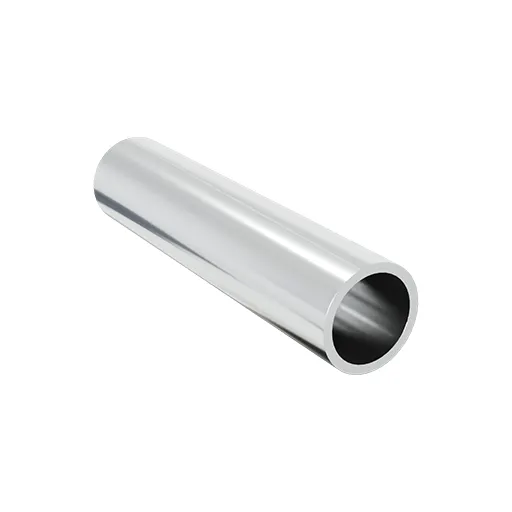
Sustainability in Nickel Alloy Production
Nickel alloy production has seen huge advances in recent years, often striving to keep some green conscience in the process. Most processes now admit energy-efficient technologies or water recirculation systems to keep resource suction from taking place in the smelting and refining processes; otherwise, recycling is another means to sustain the nickel alloys. A large proportion of the nickel used in alloy making processes is recycled: this curbs primary extraction from the environment and keeps those activities from focusing on an ecologically adverse impact.
Such technologies further sustain using methods that include low-carbon energy generation and waste recovery systems. To illustrate, the by-products from mining and manufacturing are increasingly utilized in nickel activities, thereby reinforcing the circular economy. These improvements are turning into tools to reduce the emissions of greenhouse gases—a much-needed solution in the overall fight to reverse the effects of climate change.
Sustainable Future: Industries dependent on these materials for renewable energy techniques along with the likes of wind turbines and solar cells would be looking to see the crafting of sustainable nickel alloys. Nickel alloys ought to keep being the focus of green practice investment for the worldwide sustainable infrastructure development.
Recycling and Life Cycle Assessment
Recycling finds importance in lessening the impacts that the production and use of nickel alloys may have on nature. Industries, by recovering and reprocessing used nickel alloys, significantly reduce the demand for primary raw materials, with corresponding lower energy use and greenhouse gas emissions during processing. Nickel is an inherently recyclable material, hence making its sustainability rating very high, with studies showing that some 68% of the nickel currently in use is recycled. Promotion of collection and recycling of nickel scrap reduces the need for natural and raw materials and ensures less waste products, which hence should be a major point in developing circular economy.
!
Key Statistics on Recycling
- 68% of nickel currently in use is recycled
- 90% energy savings when recycling nickel alloys compared to primary production
- Significant reduction in greenhouse gas emissions through recycling processes
Life Cycle Assessment (LCA) becomes another essential tool in assessing the entire environment against nickel alloys during their life cycle, being extraction, production, use, recycling, and disposal. LCAs provide quantitative information about energy consumption, greenhouse gas emissions, resource utilization, and the like, during every stage along the way and then immediately working with industries to effect sustainable use. For example, based on the LCA, recycling nickel alloys saves around 90% of the energy required for the primary production, supporting the need for incorporating recycling processes into the supply chain. Besides, these evaluations also give insights into the possibilities of waste reduction and the achievement of greater efficiencies within the entire life stage of the alloy.
In any case, recycling and life-cycle analysis together enable an industry to make an informed choice fostering sustainability without compromising product performance. One way manufacturers can satisfy the most stringent environmental regulations and the objectives of a global sustainability agenda is by considering recycled nickel from an LCA perspective. Another way to promote recycling and further development based on LCA findings is to educate stakeholders in this area. Therefore, initiatives on nickel alloys continue to support green technologies, which will be an important choice in a more sustainable future.
Environmental Impact of Nickel Alloy Pipes
Nickel alloy pipes form a solution to reduce adverse environmental effects thanks to their durability, recyclable material, and energy efficiency. We shall now move on to five important features that characterize their environmental benefits:
Very High Durability and Life
Nickel alloy pipes have an extended life of function, which reduces their need for frequent replacement. This minimizes waste generation and conserves resources over time.
Recyclability
These pipes are obscurely recyclable, with nickel alloys having the ability to be recycled into new products by their end of life. It is estimated that approximately 90% of nickel put into construction and manufacturing gets recycled, hence reducing the volume going into landfills.
Energy Efficiency
In being thermally resistant and anticorrosive, nickel alloy pipes improve industrial processes’ efficiency. This reduces energy consumption and helps further lower greenhouse gas emissions.
Corrosion Resistant
The superior corrosiveness resistance available with nickel alloys makes a supplemental protective coating unnecessary, coatings that usually contain VOCs harmful to the environment.
Support to Renewable Technologies
Nickel alloy pipes are commonly used in land-based renewable energy systems such as geothermics and solar. This highlights their role in the transition to greener energy and in the reduce dependence on fossil fuels.
These features put nickel alloy pipes in the class of sustainable products considered by industries intending to minimize environmental impacts while ensuring high-quality performance and utmost reliability.
Maintenance and Care for Nickel Alloy Pipes
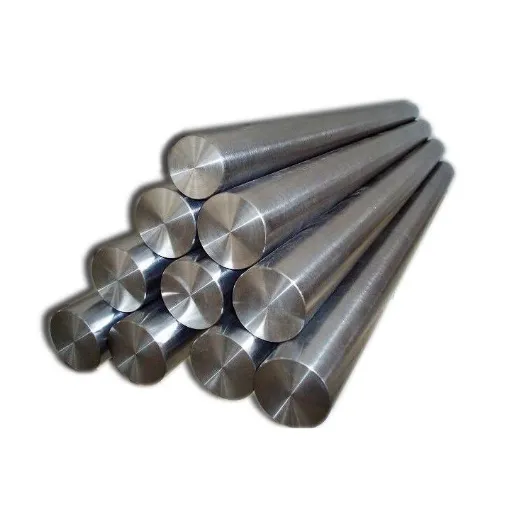
Regular Inspection and Monitoring
Regular inspections and monitoring are essential to track the optimum performance of nickel alloy pipes and their lifespan. Occasional periodic observation can reveal signs of wear, corrosion, or any form of damage to the pipes on which their integrity depends. Non-destructive testing methods provide an advanced option to uncover internal imperfections or issues that may not be externally noticeable. With an early detection of these problems, industries can work towards preventing their late-stage failures and thus undesirable downtime.
Best Practices for Monitoring:
- Conduct periodic non-destructive testing to uncover internal imperfections
- Monitor environmental factors including temperature, pressure, and chemical composition
- Implement IoT devices and machine learning algorithms for predictive maintenance
- Install sensors for real-time observation of operational conditions
Environmental factors have equal importance in the consideration of the inspection process. Nickel alloy pipes are quite often subjected to harsh situations, some extreme temperatures, high pressure, and corrosive environments. Setting up sensors and monitoring systems provides a real-time observation of what goes on down there: temperature fluctuations or variations in the chemical composition. Such data can be utilized to predict potential problems and to allow the planning of maintenance activities so as to prevent any possible damages.
Applying advanced technologies like IoT devices and machine learning algorithms improves inspections and monitoring. These technologies analyze massive amounts of operational data to discern patterns and generate predictions of forthcoming failure with high accuracy. The industries benefit from this technology coupled with conventional inspection for a holistic approach to maintenance through increased lifespan of nickel-alloy pipes and sustained efficiency and reliability in systems.
Cleaning and Maintenance Practices
Proper cleaning and maintenance, rightly done, usually improve the sustainability and efficiency of nickel alloy pipes. Cleaning the pipes prevents deposits like scale, corrosion products, or microbial contamination from forming upon the surface, as these soften after deposition and become more of a structural load with the passage of time, thereby reducing flow efficiency. Chemical cleaning or ultrasonic methods are commonly used in industry, summoned depending on the size of the build-up and the nature of the materials deposited thereon. All methods can dispose of the residues efficiently while affecting the fewest possible surfaces and thus maintain the usefulness of the pipe.
| Maintenance Activity | Method | Purpose |
|---|---|---|
| Surface Cleaning | Chemical or ultrasonic cleaning | Remove scale, corrosion products, microbial contamination |
| Visual Inspection | Scheduled intervals | Identify first signs of wear or corrosion |
| Non-Destructive Testing | Ultrasonic or eddy current testing | Detect thin walls, cracks, potential problems |
| Automated Systems | Smart sensors and AI monitoring | Consistent cleaning and predictive maintenance |
| Record Keeping | Documentation systems | Track trends and decide on replacement or intervention |
This is why maintenance at scheduled intervals is expected to identify the first signs of wear or corrosion. These include visual inspections and different methods of non-destructive testing such as ultrasonic or eddy current testing, offering a thorough view of a pipeline’s condition. Such examinations will detect thin walls, cracks, or any other potential problems that may end up costing a fortune in failures. Maintenance records will allow operators to have access to previous inspection data to track the trend and decide whether to replace or intervene further.
With cleaning and inspection in mind, cutting-edge technologies would be right to be utilized. For example, an automated cleaning system would combine smart sensors to clean thoroughly and consistently while reducing the workload. However, advanced monitoring systems that use AI and IoT could be developed to continuously monitor the condition of the pipe in real time. They could give predictions on maintenance requirements by understanding some factors such as temperature, pressure, and flow rates, thus, decreasing downtime and maintaining operational efficiency. Following this amalgamation, these practices would ensure the durability and reliability of nickel alloy pipes in the various industrial applications.
Common Issues and Troubleshooting
Working with nickel alloy pipes comes with a set of common problems requiring careful troubleshooting to maintain system integrity. One is corrosion under certain environmental conditions, like lengthy exposure to chlorides or acidic solutions. Periodic inspection and the use of corrosion inhibitors will curb this risk. Another comes from thermal fatigue due to rapid temperature changes in high-heat applications. Good thermal practice and gradual temperature changes reduce the likelihood of micro-cracking.
⚠️ Common Issues Checklist
Issue: Corrosion
Cause: Lengthy exposure to chlorides or acidic solutions
Solution: Periodic inspection and use of corrosion inhibitors
Issue: Thermal Fatigue
Cause: Rapid temperature changes in high-heat applications
Solution: Good thermal practice and gradual temperature changes
Issue: Joint Leaks and Fitting Failures
Cause: Improper installation or excessive operational pressures
Solution: Proper welding procedures and manufacturer specifications
Issue: Blockages
Cause: Scale or residue buildup in the pipe
Solution: Periodic cleaning schedules or special cleaning apparatus
Joint leaks and fitting failures are also common, often caused by either improper installation or excessive operational pressures. Proper welding procedures and fixing the fittings to the manufacturer’s specifications are the critical steps that need to be taken to prevent these failures. Blockages due to scale or residue buildup in the pipe may cause pressure losses and lower the flow rates. Having periodic cleaning schedules or employing special cleaning apparatus may go a long way in resolving the problem.
Infrared thermography and ultrasound tests are among the modern testing methods one can employ for smoother diagnostics in detecting hidden flaws. If combined with advanced monitoring systems, these methods can ensure problems are detected and resolved at an early stage, hence ensuring long-term serviceability of nickel alloy piping systems.
Future Trends in the Nickel Alloy Industry
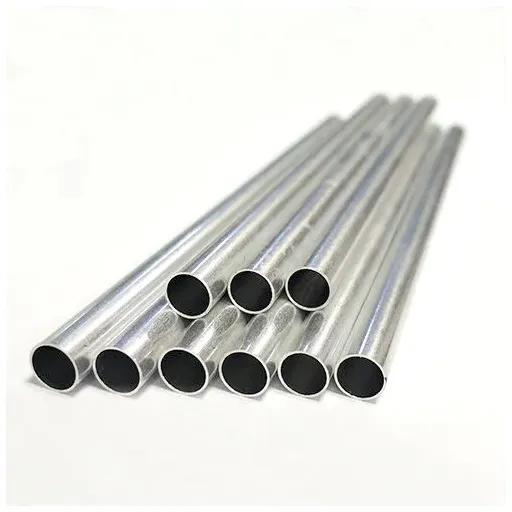
Market Demand and Supply Dynamics
Nickel alloys find applications across aerospace, chemical processing, marine, and power generation. Industry demand for nickel alloys is increasing due to the alloys’ properties, such as corrosion resistance, high-temperature behavior, and general toughness, requiring them in strong-material-needful environments. The demand is further increased with the onset of newer sectors such as renewable energy and EV productions, where nickel-based components are used for batteries and turbines. Therefore, end-user industries traveling on nickel alloys are searching fast-for-new solutions to balance cost considerations.
📈 Demand Drivers
- Corrosion resistance requirements
- High-temperature behavior needs
- Renewable energy sector growth
- Electric vehicle production expansion
⚡ Supply Challenges
- Limited mining operations globally
- Geopolitical issues affecting availability
- Stricter environmental regulations
- Labor strikes and political stability shifts
There are some sources of supply elements affecting fluctuations in availability of materials for the production of nickel alloys, relating largely to nickel mining and geopolitical issues. Large mining operations are handful of regions only worldwide, and disturbances in these areas due to labor strikes, changes in environmental policies, or shifts in political stability will create supply chain bottlenecks on a large scale. And with hiking awareness for sustainance, the entire gamut of mining regulations surrendered for a more stringent act, which again dominated the nickel extraction and processing. Adapting to these changes, manufacturers are currently focusing on improving recycling methods and enhancing efficiency in nickel recovery from secondary sources.
Future Outlook: In the future, realizing a balance between demand and supply for nickel alloys must take a proactive turn. Investments in technological innovation in recycling capabilities and alternative material development may reduce dependency on primary resources. Join forces along the value chain, from producers down to consumers, to ensure stable supply chains in handle production and distribution processes. By creating cooperation and advancing green production technologies, the nickel alloy industry can tackle future challenges while contributing sustainably to the growth of world’s industries.
Innovations in Superalloys
Superalloys are nothing less than the glory of material engineering as they have been granted with the maximum strength and stiffness and capability to endure heat and corrosion in harsher environments. These superalloys become the one on which everybody depends when making some worthy claim that the material must, by itself, work reliably at high temperature and stress. With upscaling in the discipline, we have been able to revolutionize our approach to performance and sustainability concerns.
Additive Manufacturing
3D printing allows for precise complex designs that increase performance and decrease wastage of materials. This technique revolutionizes production efficiency and material utilization.
Microstructure Tailoring
Tailoring at a molecular level results in materials that can sustain higher temperatures with enhanced lifecycle efficacy. Benefits jet engines and gas turbines significantly.
Sustainable Production
Powder metallurgy and environmentally conscious resource sourcing strengthen the industry while minimizing environmental burden and supporting green evolution.
One of the important innovative advances in superalloys is the additive manufacturing, or say 3D printing method. This technique allows for very precise complex designs that increase performance and decrease wastage of materials. Besides that, microstructure tailoring of superalloys at a molecular level has also resulted in researchers being recruited in developing materials that can sustain higher temperatures and can be used for enhanced lifecycle efficacy. All these advances sight imply benefits to jet engines and gas turbines, where performance and life have been put to high precedence.
In my view, greater teamwork between the constituents—researchers, manufacturers, and end users, is imperative to harness the full potential of superalloys. Supporting research into cutting-edge production methods employing powder metallurgy and resource sourcing in an environmentally conscious way would strengthen the whole industry with at least a minimal environmental burden. While advancing the potential of superalloys with bigger innovations, they must secure a green evolution of high-performance applications.
References
- Welding of Internally Clad X65 and X70 Pipes for Pre-Salt Applications
A project by Ohio State University discussing nickel-based Alloy 625 for corrosion-resistant pipes.
- Microstructure and Mechanical Properties of BFe10-1-1 Copper-Nickel Alloy Pipes
A study on welding techniques and properties of copper-nickel alloy pipes.
- Passivation Treatments for Copper-Nickel Alloys Exposed to Seawater
A document from the Naval Sea Systems Command on the use of copper-nickel alloys in seawater applications.
Frequently Asked Questions (FAQ)
Q
What is a nickel alloy pipe?
A nickel alloy pipe refers to piping produced from nickel-based alloys for corrosion resistance and high temperature stability. These pipes serve the most demanding environments in chemical and petrochemical industries.
Q
What are the properties of nickel alloy pipes and tubes?
The nickel alloy pipes and tubes offer excellent physical properties of high strength, ductility, and oxidation resistance. They withstand very high temperatures and extreme environments so that they can be used for numerous applications.
Q
With respect to nickel alloy pipes, what makes alloy 600 different from alloy 625?
Alloy 600, resistant to oxidation and high-temperature strength, is different from alloy 625, which has greater nickel content for resistance against pitting and crevice corrosion. These two alloys are generally used in applications requiring durability and reliability.
Q
Are nickel alloy pipes seamless?
Nickel alloy seamless pipes can be manufactured. This means it has no weld seam. It is considered to offer greater strength or integrity and is thus preferred for unforgiving high-pressure services.
Q
What industries use nickel alloy pipes commonly?
Nickel alloy pipes are being used in different industries, from petroleum to chemical processing to aerospace and power generation. These pipes are ideally suited to provide corrosion resistance in harsh environments and low-temperature applications.
Q
Do cryogenic applications exist for nickel alloy pipes?
Yes, nickel alloy pipes can be considered suitable for cryogenic applications because of their mechanical properties at very low temperatures. They can retain their strength and ductility when transporting liquids at extremely low temperatures.
Q
What are the fittings and flanges with respect to nickel alloy pipes?
Fittings and flanges serve as components to join nickel alloy pipes in piping systems. Fittings and flanges are cast from the same alloys or compatible nickel alloys so as not to compromise the integrity of the system in terms of strength and corrosion resistance.
Q
How do alloying elements affect the performance of nickel alloy pipes?
Alloying elements, for example, chromium and molybdenum, copiously supplement corrosion resistance and mechanical properties in nickel alloy pipes. In layman terms, they help make the pipes durable enough to withstand the toughest environments.
Conclusion
Nickel alloy pipes represent a critical component in modern industrial applications, offering unmatched corrosion resistance, high-temperature stability, and exceptional durability. From aerospace to chemical processing, these pipes enable industries to operate safely and efficiently in the most demanding environments. As innovations continue in superalloy development and sustainable production practices, nickel alloy pipes will remain indispensable for advancing global infrastructure while minimizing environmental impact.

